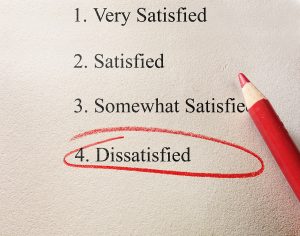Communication Suffers Storm Damage
 Despite our best efforts, sometimes communication just doesn’t get through.
Despite our best efforts, sometimes communication just doesn’t get through.
Calm in the Storm
We had a little storm down here recently called Hurricane Irma. You may have heard of it.
Since our area tends to be full of “transplants” – people who have moved here from other states – for many of them it was their first encounter with a large storm. As you may guess, there was a lot of panic.
To their credit, the Oviedo Mayor, Dominic Persampiere, and the Emergency Operations Chief, Lars White, did an excellent job of using social media and other channels both before and after the storm. Information about shelters, services available, electricity restoration, etc. As I often recommend to leaders, they over-communicated; often the same message multiple times.
Yet still some people kept asking questions about what was already answered multiple times. What gives?
Obviously for some, the communication wasn’t working. It was not really the fault of the communicator in this instance; there were just too many barriers in the way.
Successful Communication
For successful communication, there has to be a meaningful message, an intent sender, and an open receiver. Any one of those three can end up creating a barrier to communication rather than lending itself to success.
Some of the Most Common Barriers to Communication are:
Emotions that Get in the Way
Emotional content is an important part of communicating effectively. Without that, the true meaning of our message is often missed. Where it goes wrong is when the emotions get away from either the sender or receiver. What happened with the storm communication was that the receivers were so full of strong and urgent emotions, it was very hard for the message to get through. It was missed again and again. The sense of the unknown, the panic, the worry, and the fear overwhelmed people. When someone is overwhelmed, it is difficult to send or receive a message successfully. Address the emotions before you address the message.
Undeclared or Unreasonable Expectations
We almost always enter conversations with ideas in our head about what we want to happen or what should happen. Those notions affect our understanding and our responses. We might have the presupposition that the other person will be rude to us because they work for the government and so we enter the conversation expecting rudeness and ready to react to rudeness. We close ourselves off to meaningful conversation because our mind has already given us the answer; we therefore don’t need to hear what the other person has to say. We react to what we expect instead of responding to what we hear. It’s a good practice to set expectations when you begin the conversation rather than allowing the audience to rely on their own.
[tweetthis]Often we react to what we expect instead of responding to what we hear. [/tweetthis]
Using Jargon
This includes using industry slang, abbreviations, acronyms, and words and phrases other people cannot legitimately be expected to know. Let’s throw in using Internet slang and acronyms like LOL, OTOH, IMHO, and so forth. They have their place and it’s not in meaningful conversations or communications. Clear communication requires a shared pool of meaning; in other words everyone has to understand the basics for understanding to occur.
The Absence of Nonverbal Communication
The thing about social media, teleconferences, email, and many of the other ways we communicate today is that we can’t see the other person. If we can’t see the speaker, we can’t rely on gestures, head motions, eyes, mouth movements, and other body language that adds meaning. If we can’t see the audience, we can’t modify our delivery based on how we see people reacting. A UCLA study indicated that 55% of meaning is determined by what people see. So think about that; over half the meaning is lost in a text message or email or social media post. If in person isn’t possible, ask questions to derive feedback and confirm meaning.
Inherent Prejudices
Let’s face it, there will be people where you just don’t like their looks. Hate their politics. Consider their religion to be evil. Have disdain for where they are from. Find the way they talk funny. Or just have something you dislike that you can’t put your finger on. Any of that creates in you a mindset from the beginning of the conversation that closes you off to understanding or to speaking to them in a clear, respectful manner. We all have prejudices, we need the emotional maturity to see past them for communication to occur.
[tweetthis]We all have prejudices, we need the emotional maturity to see past them to communicate.[/tweetthis]
Different Culture
Values and beliefs often come from our ethnic background or simply the environment in which we live. As a native Floridian, my concept of cold is quite different from someone from Wisconsin. So if I say “Gee, it’s real cold out!” I’m thinking it’s below 70 degrees. The person from Wisconsin is thinking around 10 degrees with a 15 degree wind chill factor. When I travelled to Hong Kong to lead workshops, I had to understand the cultural differences and adjust what I say and how I say it to keep the meaning the same.
A Lack of Common Ground
Authentic and meaningful communication occurs when we have connection. Having common ground with someone gives us that connection. Once we have it conversations automatically become more meaningful, immediately require our attention. We are more apt to actually try to reach understanding and perhaps even work past other barriers that get in the way. Common ground should be the starting point for establishing any kind of rapport for communication. Look for ways to establish common ground.
An Uncaring Attitude
 If you don’t care about the people with whom you are communicating it comes out in what you say and how you say it. Your audience will pick up on it sooner or later. Once they feel you don’t care about them, anything else you have to say doesn’t matter. As John Maxwell says, “People don’t care how much you know until they know how much you care!” If you are having trouble caring, truly caring, about your audience pause a moment and determine why. It may mean it’s the wrong audience. It may mean you are communicating for the wrong reasons. It may mean simply it’s not the right time. Stop the communication and re-group.
If you don’t care about the people with whom you are communicating it comes out in what you say and how you say it. Your audience will pick up on it sooner or later. Once they feel you don’t care about them, anything else you have to say doesn’t matter. As John Maxwell says, “People don’t care how much you know until they know how much you care!” If you are having trouble caring, truly caring, about your audience pause a moment and determine why. It may mean it’s the wrong audience. It may mean you are communicating for the wrong reasons. It may mean simply it’s not the right time. Stop the communication and re-group.






